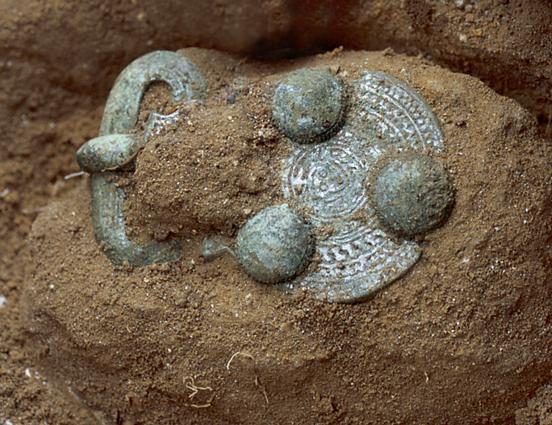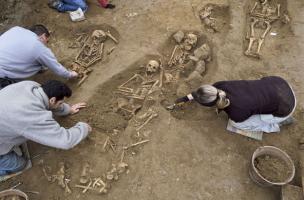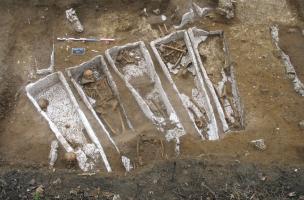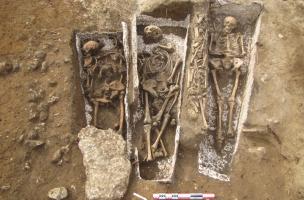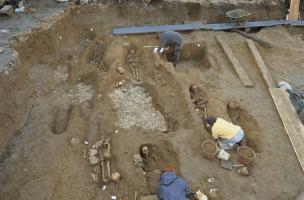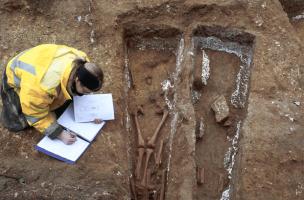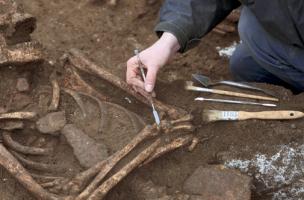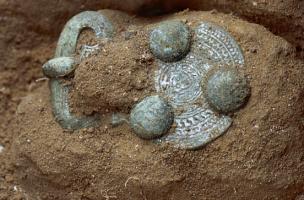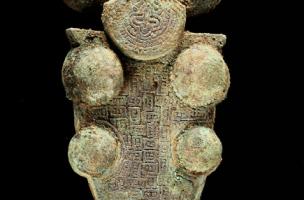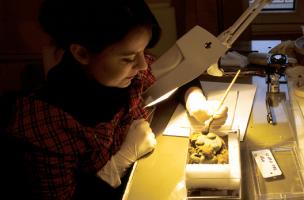Curated by the Regional Archaeological Service (DRAC Île-de-France), this excavation covers 1,200 m2, the area to be occupied by a building complex, rue Pierre-Brossolette.
Merovingian Noisy-le-Grand
Noisy-le-Grand is first mentioned in the History of the Franks, by Gregory of Tours at the end of the 6th century AD, in which he mentions a "royal villa" and an oratory for prayer. Can the latter be associated with the cemetery being brought to light at the moment? It is one of the numerous problems that the archaeologists will try and tackle; the study of the bones will bring, in addition, precious indications about the living conditions of the population of Noisy-le-Grand between the 5th and 10th centuries, their demographic profile, kinship links, nutritional deficiencies …
A funerary group of 600 graves
On this same plot of land, two cemeteries succeeded each other and intermingle. The first one, Merovingian (5th-6th c.) consisting of almost 300 graves, is characterised by plaster sarcophagi, the dead adorned with bead necklaces, ear-rings, brooches and plate buckles (belt). The sarcophagi, orientated east-west, are grouped by family and community. The second one, Carolingian (8th-10th c.) is marked by a change in funerary practices, imposed by the Church, obeying the rule of humility before God. Progressively, the organisation of the graves changed, giving way to simple grave pits. The bodies, unadorned, are wrapped in a shroud and buried directly in the earth.
Developer : SCI Les Mastraits
Curation : Regional Archaeological Service, Île-de-France
Site Director : Cyrille Le Forestier, Inrap
Archaeological research : Conseil général de la Seine-Saint-Denis, Inrap
